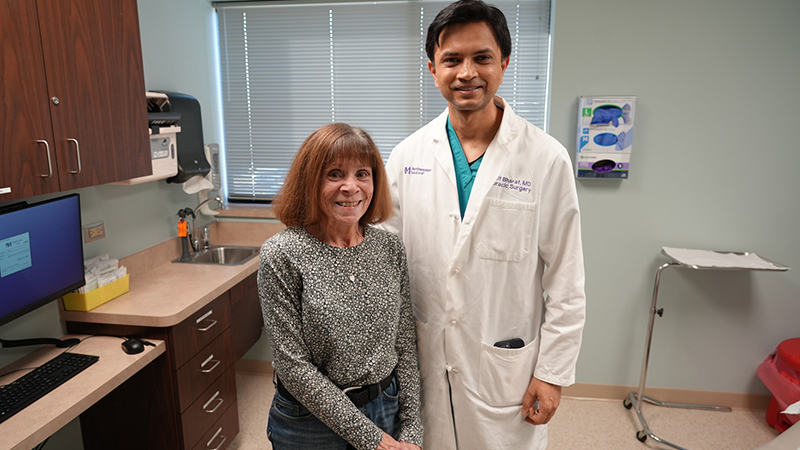New Hope in Liver Transplantation
Technology Makes More Donor Livers Available
Published August 2023
In the first six months of 2023, only about half of the 10,000-plus people who needed a liver transplant were able to get one. Technology called liver perfusion is helping to change that.
What Is Liver Perfusion?
Liver perfusion is the process of circulating fluid and oxygen through the liver prior to a transplant to improve the function of the liver and enhance the recovery process for patients. The process is sometimes referred to as “liver in a box.”
Once outside the body, the donor liver is:
Northwestern Medicine is among the leading transplant programs investing in perfusion technologies.— Daniel Borja-Cacho, MD
- Attached to a device that circulates either warm, oxygenated and nutrient-enriched blood or a cold, oxygen-rich solution.
- Kept alive while it’s being transported, which makes time less critical.
Both warm and cold liver perfusion have benefits. Currently, warm perfusion is approved by the Food and Drug Administration, while cold perfusion is in clinical trials, including one at Northwestern Medicine Organ Transplant Center, one of the largest transplant centers in the Midwest. The center uses both warm and cold perfusion and has pioneered some of the first clinical trials as this rapidly evolving technology has been introduced in the United States.
Warm Perfusion
During warm perfusion, surgeons attach the donor liver to a machine that pumps warm, oxygenated and nutrient-enriched blood through the organ. While the liver is on the pump, the team assesses its function to ensure it is ideal for transplantation.
This is especially important when initial criteria suggest the donor liver may not be usable for transplant. These organs had typically been discarded, but perfusion allows the care team to carefully evaluate them, and find an appropriate patient match.
“Compared to the national average, our team already has shorter liver waitlist times and low waitlist mortality rates,” says Zachary C. Dietch, MD, a transplant surgeon at Northwestern Memorial Hospital. “Warm perfusion will enable us to transplant even more patients, faster.”
The heart and lung transplant teams at Northwestern Memorial Hospital also use warm perfusion technologies to preserve and assess donor organs.
Cold Perfusion
A Northwestern Memorial Hospital team led by Dr. Borja-Cacho is part of a clinical trial using cold perfusion to preserve livers for transplantation. For the study, surgeons attach the donated liver to a precision-controlled pump that circulates a chilled, oxygen-rich solution into the liver.
“The solution helps preserve and repair the liver so that by the time we place it in the patient, it is ready to work faster and starts working better,” says Dr. Borja-Cacho.
His team continues to monitor patient outcomes for the FDA-approved warm perfusion and the cold perfusion clinical trial. Each patient has a personalized treatment plan to achieve the best possible results.
“So far, patients who have received perfused livers seem to be recovering faster and better than patients who received similar livers without machine perfusion,” Dr. Borja-Cacho notes.
How to Become a Donor
Transplants are only possible because individuals and families make the choice to donate organs.
“Organ donation, whether from a living donor or a deceased donor, is the greatest gift a person can receive,” says Juan C. Caicedo Ramirez, MD, surgical director of the liver transplant program at Northwestern Medicine and director of the Northwestern Medicine Hispanic Transplant Program. “We honor donors when we make more organs viable for transplantation. Research and innovation are helping our team maximize the possibilities.”
You can register to be a donor through the United States Health Resources & Services Administration.






